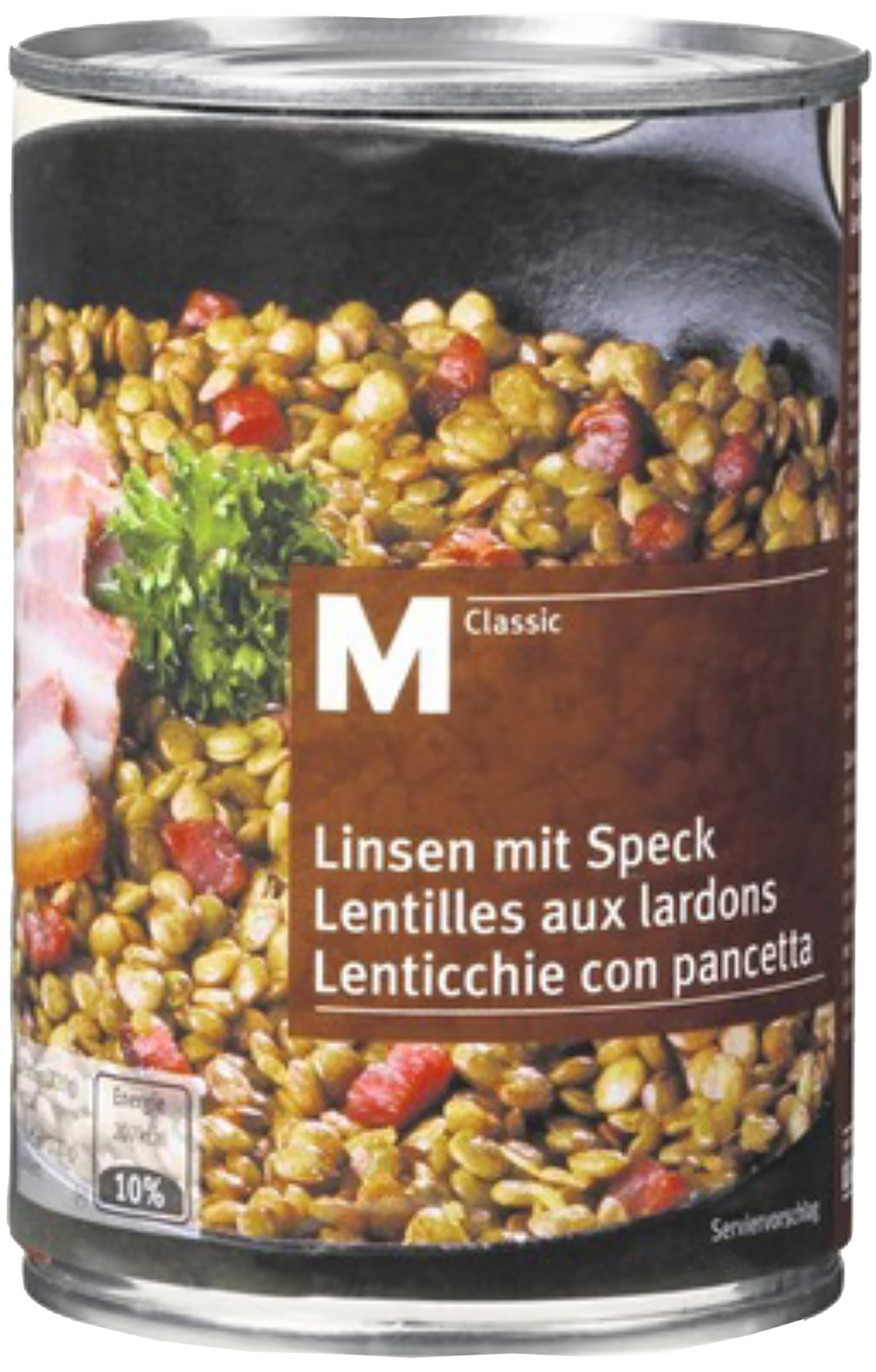Linsen mit Speck - Migros - 440g
This product page is not complete. You can help to complete it by editing it and adding more data from the photos we have, or by taking more photos using the app for Android or iPhone/iPad. Thank you!
×
Barcode: 7616800800165 (EAN / EAN-13)
Common name: Lentilles aux lardons
Quantity: 440g
Packaging: fr:Boite-de-conserve-acier, fr:Produkt
Brands: Migros, M-Classic, Bischofszell
Categories: Plant-based foods and beverages, Plant-based foods, Fruits and vegetables based foods, Canned foods, Meats and their products, Vegetables based foods, Canned plant-based foods, Meals, Canned vegetables, Meals with meat, Canned meals
Manufacturing or processing places: Bischofszell Nahrungsmittel AG Industriestrasse 1 9220 Bischofszell TG Suisse, Suisse
Traceability code: CH 312
Stores: Migros
Countries where sold: Germany, Switzerland
Matching with your preferences
Health
Ingredients
Food processing
Additives
Ingredients analysis
Nutrition
Environment
Packaging
Transportation
Report a problem
Data sources
Product added on by emerycm
Last edit of product page on by prepperapp.
Product page also edited by date-limite-app, foodrepo, itsjustruby, openfood-ch-import, openfoodfacts-contributors, packbot.






